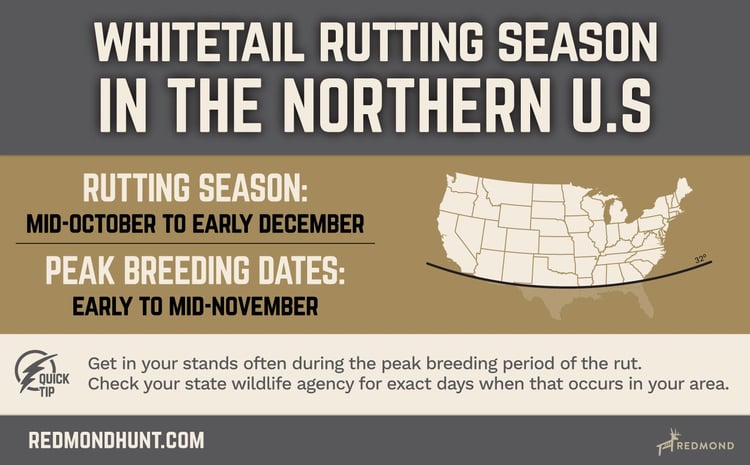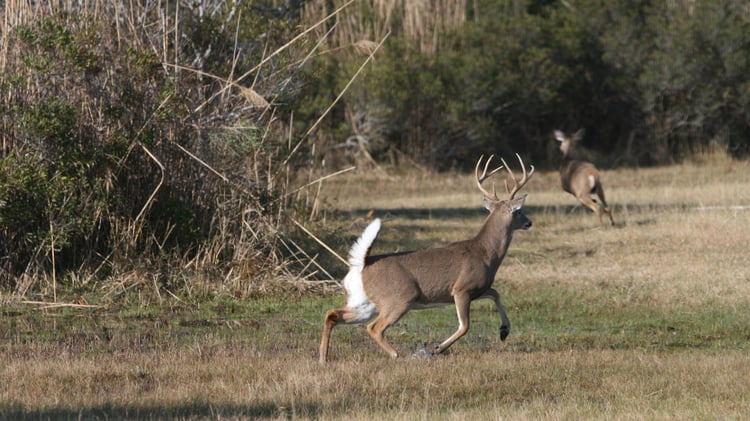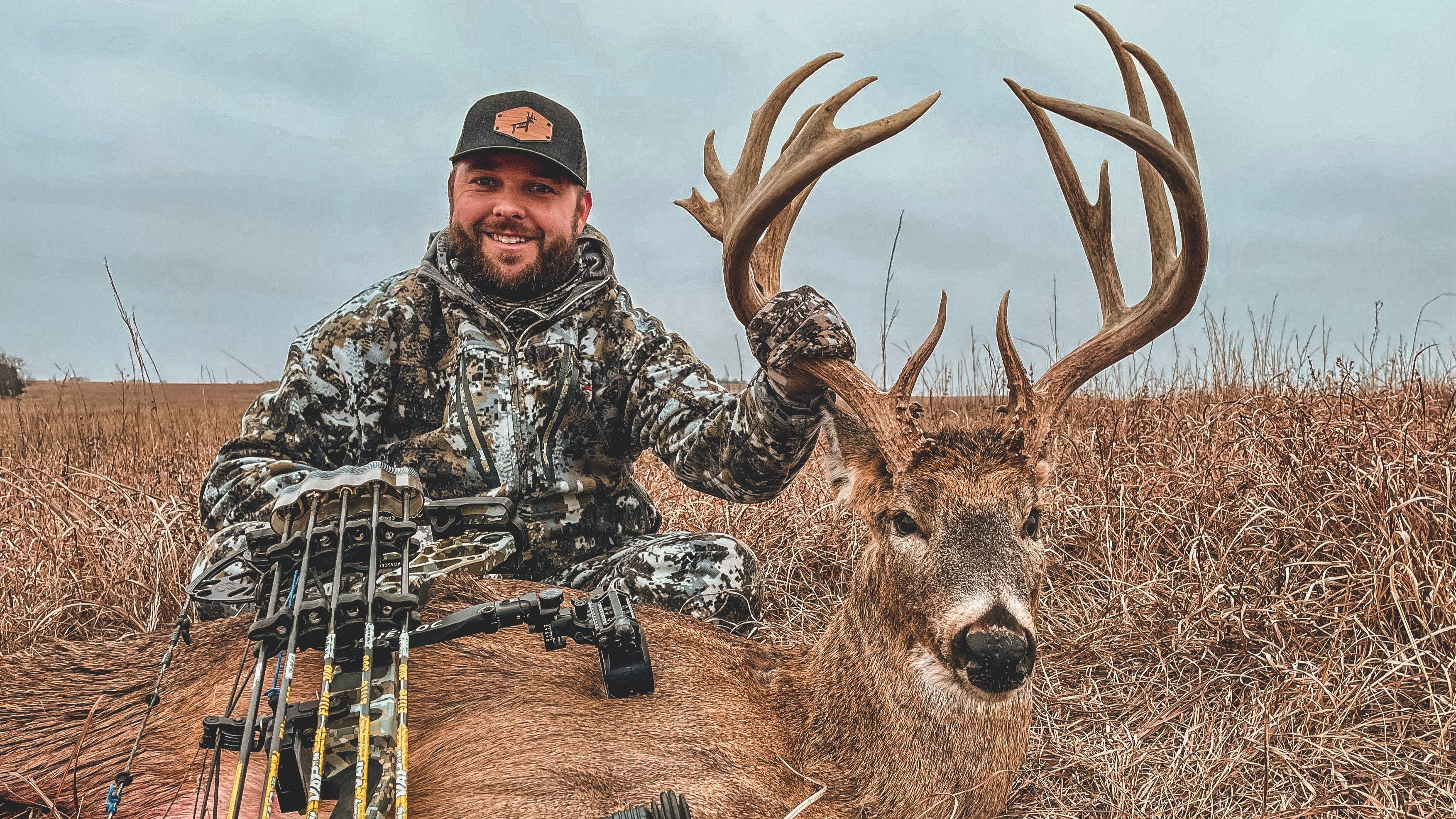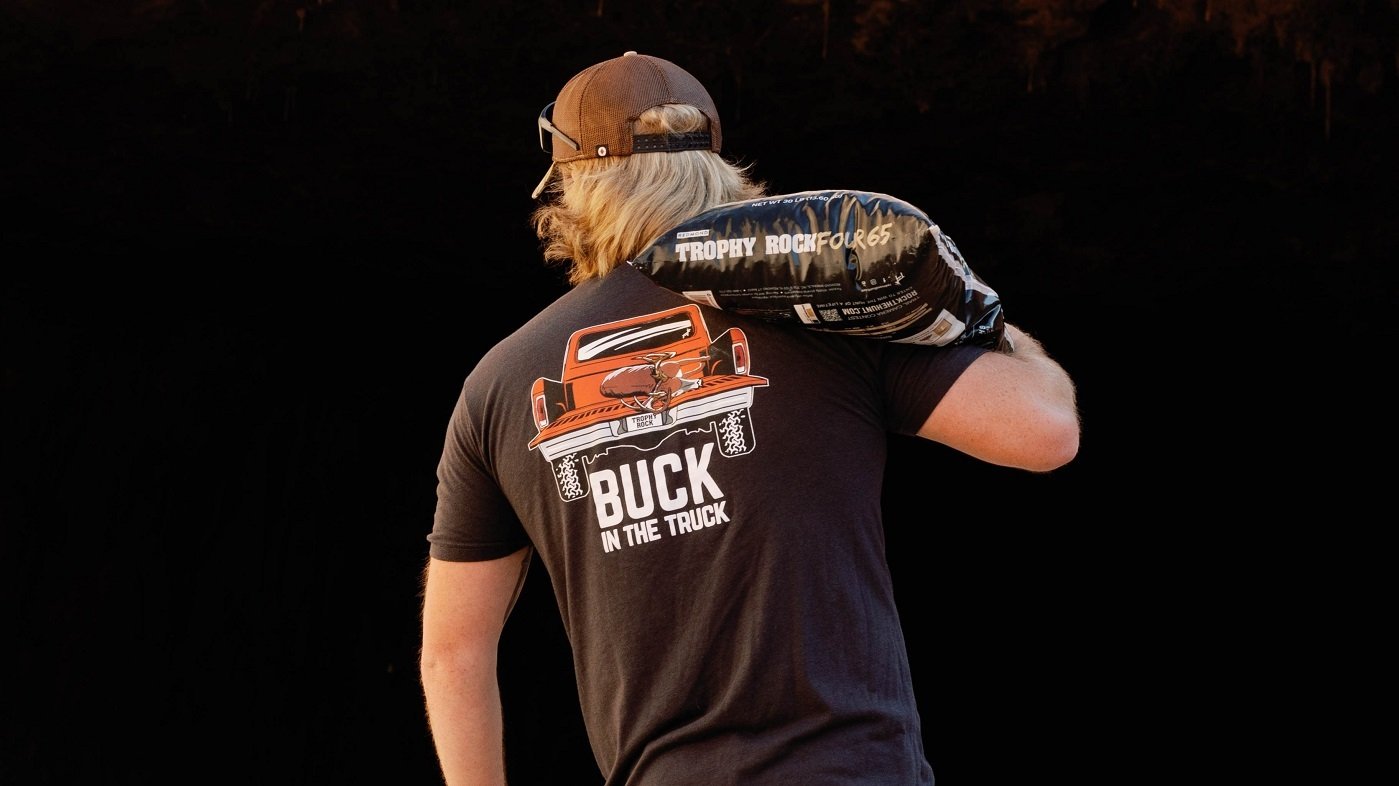Redmond Hunt Blog
How to Hunt the Rut During Every Phase
Redmond Hunt October 13, 2023
When is the rut for deer? How do you hunt the rut? Learn about whitetail deer rutting behavior and get useful tips for hunting all three phases of the rut.
The rut is the most epic time of the year—for hunters and whitetails alike. It’s the season when cagey deer daylight, crisp mornings dawn, fall colors blaze, and the clashing antlers of sparring bucks clang through the woods. It's the storied, glory days of the hunt.
In practical terms, the rut is the breeding season when whitetail does are in heat and bucks are hot on their heels in search of a willing mate. Deer abandon their natural caution during this time, resulting in both bucks and does on the move. The commotion makes the forest come alive with movement and sounds that can seem almost chaotic compared to its usual stillness.
Because of this uptick in activity, rutting season is when hunters have the best chance of sighting deer and rooting out wary bucks. So just exactly when is this magical time, and how can you best hunt it? Let's cover when to strike and tactics to deploy to make the absolute most of the deer rut.
When is Deer Mating Season?
When the rut occurs for deer depends on location. The exact timing varies across the U.S., and especially in the South. The southern rutting season is highly erratic and can range from August to February and differ even from county to county.
In the northern three-fourths of the country, the whitetail rut is happily predictable—allowing hunters to plan exactly when to hit the woods for the greatest hype. Generally, in the region north of Earth’s 32nd parallel deer go into rut around mid-October to early December, with the peak occurring early to mid-November.

What Triggers the Rut?
The deer rut isn’t triggered by cool weather, delayed by a mild fall, or influenced by moon phases—but these factors definitely do affect deer behavior and activity and you should consider each in your hunting game plan.
So what does trigger the deer rut? The National Deer Association notes decades of data collection by state wildlife agencies and university research proves photoperiod (length of daylight) is what triggers estrus in does and begins the rutting period. And it happens at the same time, year after year, like clockwork.
Mississippi State University explains it this way: As daylight wanes in fall, “a series of hormonal events are set in motion that result in egg development and release, and of most importance to a hunter, the behavioral changes that make females particularly attractive to bucks and receptive to their attention.”
So, ultimately, it’s Mother Nature who decides when rutting season is. She synchronizes whitetail breeding so fawns are born in the spring at a time that maximizes their chance of long-term survival. Pretty smart. A doe’s internal clock tells her it’s time to entertain the opposite sex for optimal herd survival, bucks begin to chase with abandon, and it’s game on for deer and hunters alike.
Three Phases of the Rut
Rutting season can be divided into three major phases: pre-rut, peak rut, and post-rut. Behaviors change during each stage, and knowing what deer are up to can help you know what tactics to deploy to improve your chances of wrapping a tag around a nice rack. Let’s talk about each.
Pre Rut
Pre rut for whitetail deer begins in late September and continues into October. Feeding is a deer’s foremost activity during this time. Both does and bucks are focused on increasing fat supplies in anticipation of winter, pregnancy, and the physical demands of the mating season. Find pre rut hunting tips and deer behaviors below.
.jpeg?width=750&height=422&name=AdobeStock_242373084%20(1).jpeg) A buck creates a deer rub on a tree to deposit scent and build neck muscles for sparring.
A buck creates a deer rub on a tree to deposit scent and build neck muscles for sparring.
Deer Rutting Behavior
- Actively feeding.
- Limited daytime movement.
- Bucks start rubbing—often at night. They rub antlers on trees to deposit scent and build neck muscles in anticipation of rivalry matches.
- Bucks begin to create scrapes—also at night. They use their hooves to expose fresh soil which they mark with scent glands and urine. Scrapes are usually located under an overhanging tree branch, which males will also scent-mark by licking and rubbing their forehead over. Does and other bucks are attracted to scrapes and will urinate on them to leave their own scent. This allows a buck to determine gender and reproductive status of other nearby animals (Massachusetts Division of Fisheries and Wildlife).
- Bucks begin sparring with other bucks to establish dominance.
Hunting Tactics
- Scrapes and rubs attract other deer, so target those areas. They’re often along ridgetops, field edges, or corridors to and from food sources.
- Bucks are beginning to search for does, so establish new stand locations based on doe activity.
- Keep trail cameras rolling, especially near scrapes, to catch pics of bucks cruising your property.
- Since deer’s primary activity is feeding, focus your hunting efforts along travel routes or between bedding areas and food sources especially at dawn and dusk.
- Use a quality long-range deer attractant like Liquid Trophy Rock to entice deer to your site.
Peak Rut
The rut spans from approximately late October to late November. As it arrives, mature bucks become increasingly active, attempting to establish dominance within their territory. During this time, they abandon typical daytime habits and begin moving about in search of a mate. Bucks are more distracted, less cautious, and a heck of a lot easier to hunt as they engage in three main activities: seeking, chasing, and tending.
.jpeg?width=750&height=422&name=AdobeStock_188142536%20(1).jpeg) A whitetail buck creates a deer scrape by digging in the soil and depositing scent.
A whitetail buck creates a deer scrape by digging in the soil and depositing scent.
Deer Rutting Behavior
- Sparring: Full-blown antler fights break out between bucks of similar hierarchal status.
- Seeking: Bucks are actively scent-checking scrapes and cruising from one food source or bedding area to another searching for hot does.
- Chasing: Bucks will chase does for hours or even days leading up to the time females are receptive and ready to breed.
- Tending: Bucks tend during a stage also known as “lockdown.” It’s the period where bucks bed down and feed with receptive does. This stage can last for 24-48 hours and often creates a lull in activity in the woods during the peak of the rut around mid-November.
Hunting Tactics
- Bucks go where the does are, so find the does! Set up stands near bedding spots and on trails in between food sources; bucks chasing hot does will usually move on well-traveled trails.
- Use vocalizations. Deer calls can be made with grunt tubes or can calls—which imitate a doe in heat—to call deer in.
- Rattle antlers to simulate brawling bucks and peak the interest of outlying deer.
- Keep trail cameras rolling as you hunt the rut, especially near scrapes, to catch pics of bucks cruising your property.
- Use a cover scent/deer attractant to cover your own scent and lure deer in.
Post Rut
As the rut tapers off around early December, both males and females focus once again on finding food. Refueling is especially important for bucks, as some can lose up to 20% of their body weight during the exertion of the rut. Increase your odds of taking a late-season buck by knowing the post-rut hunting tactics and deer behaviors below.
 A whitetail buck chases a doe in heat during early rutting season.
A whitetail buck chases a doe in heat during early rutting season.
Deer Rutting Behavior
- Daytime activity decreases.
- Bucks are still interested in chasing and tending late-estrous does if available.
- Bucks and does are again focused on finding food.
Hunting Tactics
- Target food sources at dawn and dusk, similar to pre-rut.
- Walk through the woods and get deer up and moving from bedding areas.
- Set up your stand near good food sources or bedding areas.
- Use a deer attractant like Liquid Trophy Rock to draw deer to your site.
Best Advice for Hunting the Rut
Knowing the ins and outs of whitetail antics will help you strategize and take your best shot at a rut-crazed buck. But of all the tactics we’ve mentioned, the most important is to just get in your stand—a lot—during the peak breeding period. Check with your state wildlife agency for a range of days when that occurs in your area, and good luck!
Ready to hit the rut and rock your hunt? Go armed with Redmond deer mineral supplements and attractants! Click below to visit our online store, check out our products, and purchase today. Or watch the video above for last-minute hunting tips from our Redmond team to help you up your game heading into the season.
© Redmond Hunt 2023. All rights reserved.



.jpg)
